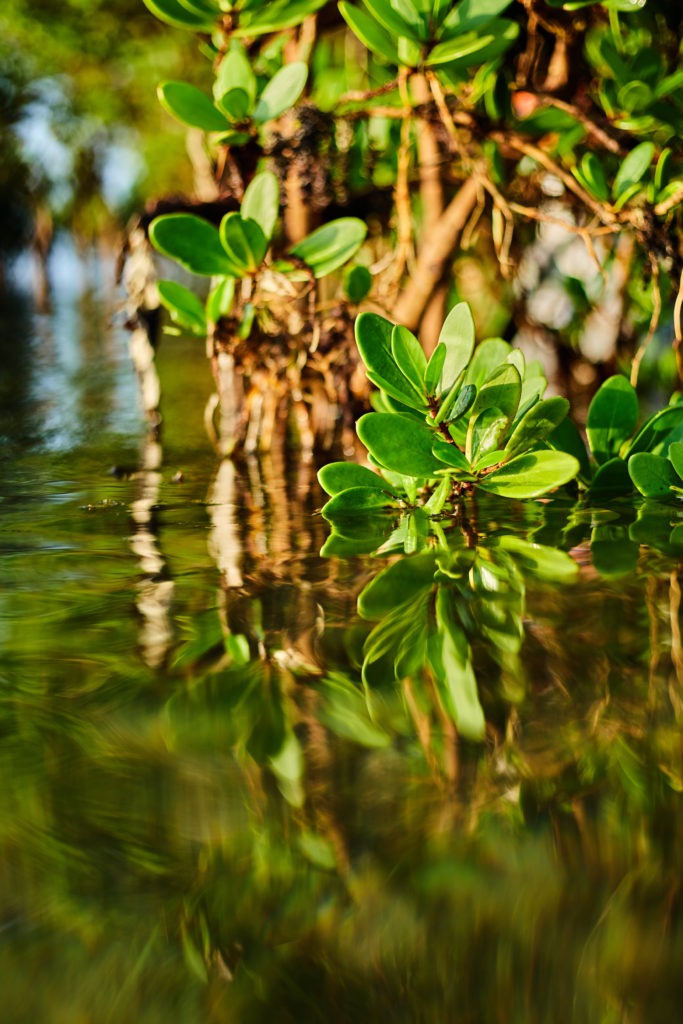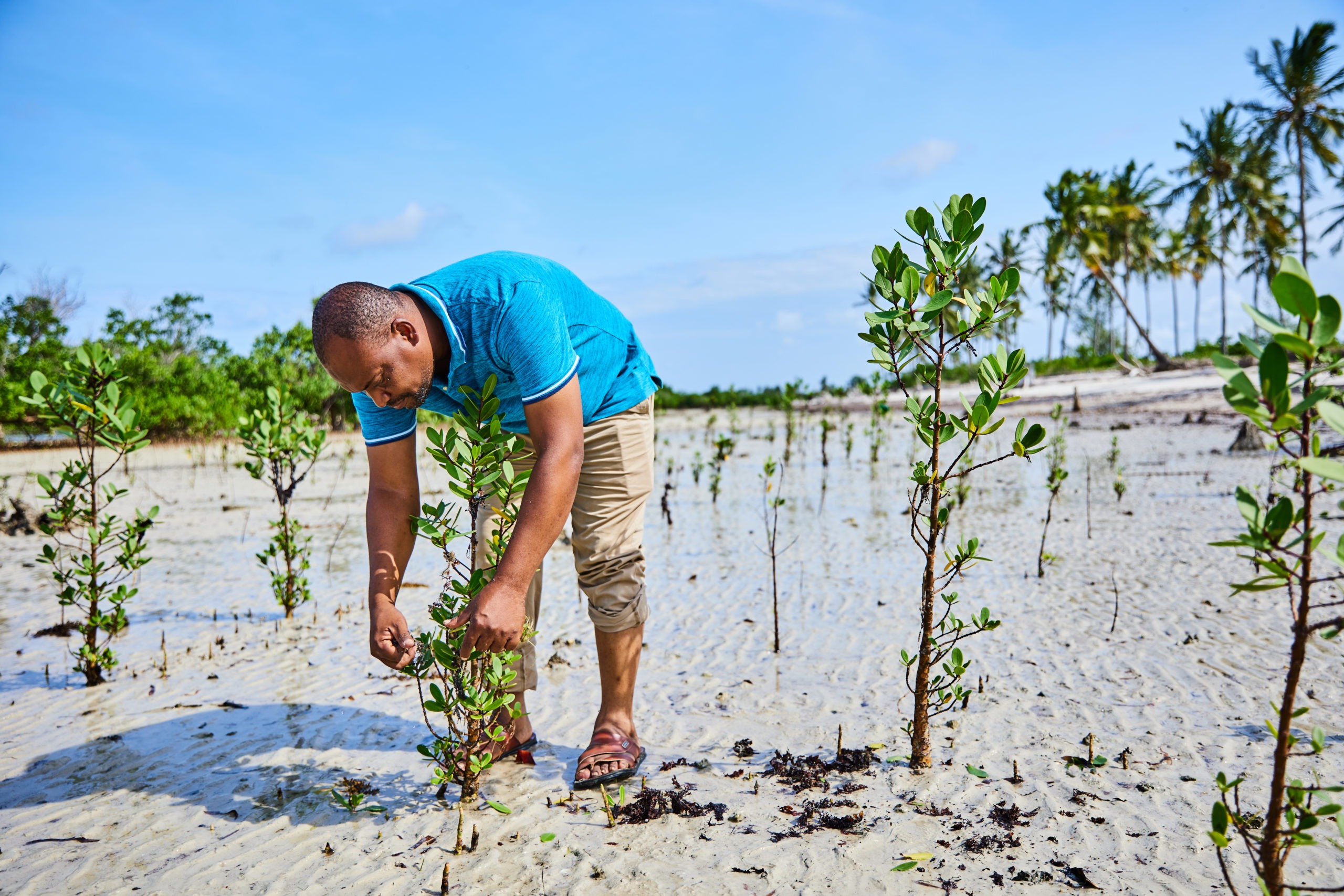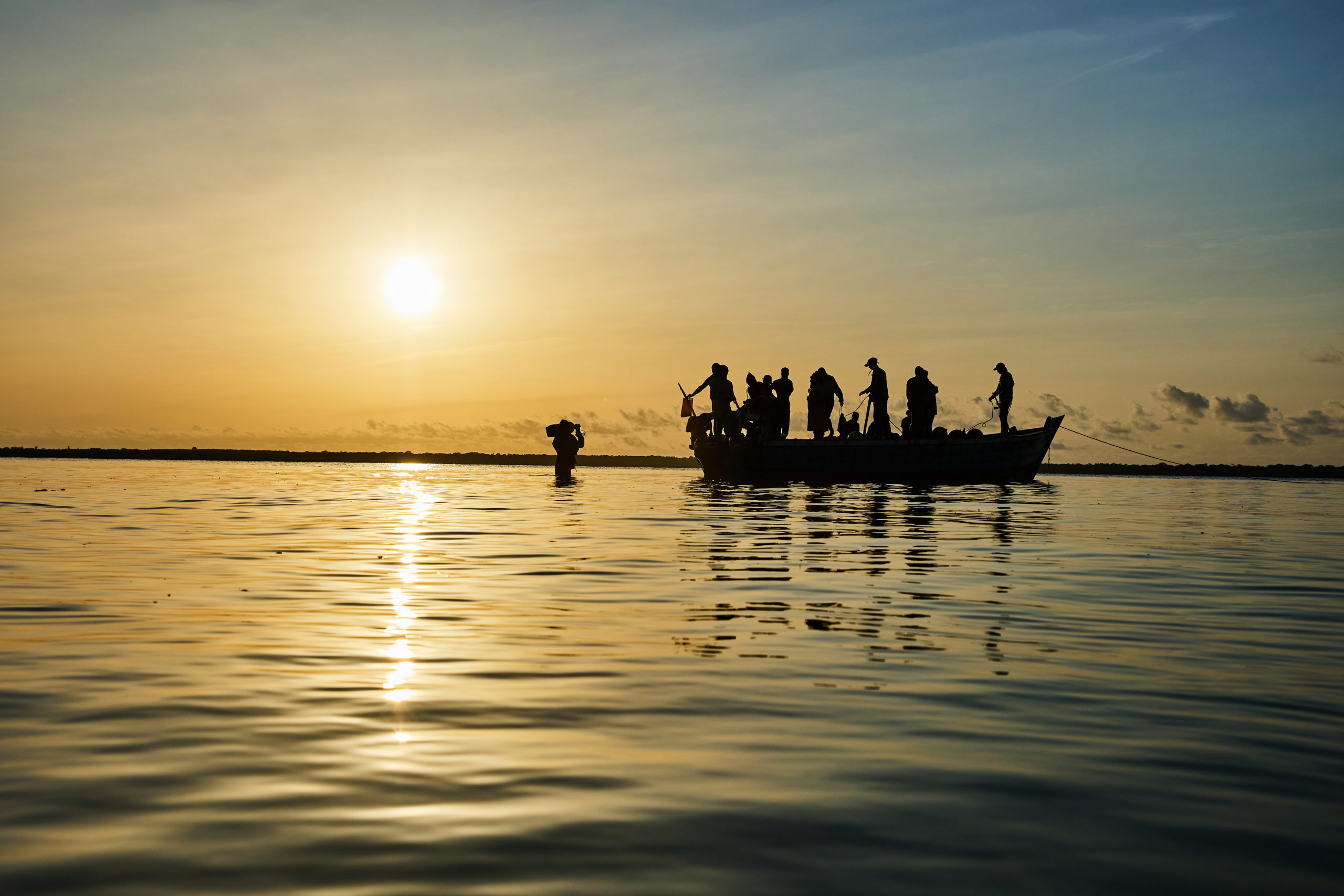The Law of Mangroves
Written by Jackson Biko
The law is an ass. That was the initial feeling borne by a good number of people in the Kenyan coastal region of Gazi (Kwale County) and Mtwapa (Kilifi County). An ass gets the job done; it transports heavy goods without complaining, unencumbered by loads of demands. It does a job that very few animals will do. An ass is stoic. But this was not even about the law, it was about change, attitude and perspective. It was about mangroves.

© White Rhino Films / IUCN
Mangroves form a unique ecosystem that covers 54,430 ha of the Kenyan coast. For generations, local communities depended on them for fuelwood and for construction. Fishermen have also cut them down for their oars. In Gazi Bay, about 100 ha of mangrove forest was lost over time and about 10 ha in Makupa Creek in Mombasa suffered the same fate. Something had to give. Even though the signs were staring them in the face, nobody could see them; most notable was the fact that gradually, fishermen would come back from the ocean with dwindling catch, affecting the livelihoods of close to 80% of the community who depended on fish. More acutely, and unseen, the environment suffered; soil erosion and erratic weather patterns. So the government banned the illegal logging of mangroves.
Nobody understood why. Not immediately, at least. Over in Gazi, Juma Kongoriko, a former fisherman, groans when he remembers that time soon after the ban. “This is what we were used to. [Fishing] This is something that we felt belonged to us. It was part of our culture; we built houses using these poles because a good number of us couldn’t afford to build using stones. So we were not happy with the ban but slowly, groups came to educate us on the importance of these forests and it slowly sunk in. To some it’s still sinking.”
Gazi is a typical fishing settlement. It’s laid back. Taarab music trickles from local shops. Men sit on verandahs, shooting the breeze. Palm trees sway unhurriedly in the humid heat. Poverty levels here – according to statistics – stem from low formal education. Incidentally, Gazi’s forests are home to all nine varieties of mangrove that grow in Kenya and a home to 180 species of fish and a diverse bird life. The ban was warranted.
One of the most successful interventions is by Mikoko Pamoja group set up in 2013 to protect 117 hectares of mangroves forest around Gazi in partnership with coastal communities. Rahma Rashid, who works with the organisation, portrayed these interventions in the form of numbers and science. “Mangroves store 50 times more carbon in their soils by surface area compared to tropical forests and ten times more than temperate forests.”

© White Rhino Films / IUCN
What is a temperate forest, Rahma? You might ask. She explains that it’s a forest found between a tropical and boreal region. [Well, we won’t ask what a boreal region is.] Their intervention has caused great change. Instead of wood for construction and firewood, the project established Casuarina trees as alternative – as well as material falling from coconut trees – for fuel. “This has traded an equivalent of 3,000 tonnes of carbon dioxide a year from over 100 hectares of mangroves.” She states. The villagers have also seen, over the last eight years, a sharp rise in their fish harvest as the forest also serves as nurseries for many fish species, including coral reef fish.

© White Rhino Films / IUCN
Hakim Mohhamed, a fisherman, later nods his head when this principle is posed to him. He’s done fishing all his life. He knows no other skill. “At first we were resistant to this new government ban, but soon we saw how a little sacrifice on our part can benefit us and our children in future, because I don’t want my children to go fishing like I have for the past 12 years,” Hakim says.
The rule of law has largely prevailed in many of these communities. Ironically most of the community members have eventually recognised the importance of an ass. An ass saved their environment. An ass saved their mangroves. Cheers to asses!